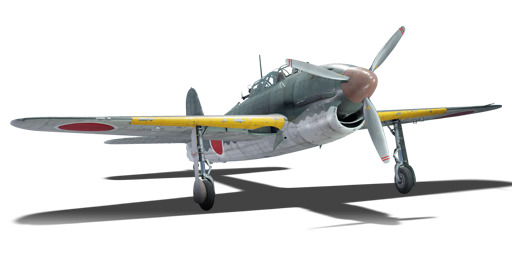




The D4Y1 mod. 11, designated as the Suisei 11 (彗星一一型), was a dive bomber developed to replace the D3A1 with the primary design criteria being able to out-speed pursuers and out-range American carriers. With Japanese engine development lacking behind, the chosen high-output engine for the Suisei was the Aichi Atsuta 21 engine, a license-produced DB 601 found on the Bf 109 (Family) and many other German planes. While the engine outperformed its Japanese counterparts, the lack of industrial power, rare resources for parts and overall maintenance complexity strained its reliability and production numbers.
It was introduced in Update 1.75 "La Résistance". The pursuit for a long-range high-speed dive-bomber hampers the other capabilities of D4Y1, with relatively weak survivability, limited to only one bomb of maximum 500 kg which leaves the Suisei as a hit-and-run dive-bomber.
flaps
flaps
flaps
brake
| Belt | Belt filling | Armor penetration (mm) at a distance: | |||||
|---|---|---|---|---|---|---|---|
| 10 m | 100 m | 500 m | 1000 m | 1500 m | 2000 m | ||
| T/AP/IAI/AP/I | 13 | 12 | 7 | 3 | 2 | 0 | |
| T/AP/IAI/AP | 13 | 12 | 7 | 3 | 2 | 0 | |
| T/T/T/AP | 13 | 12 | 7 | 3 | 2 | 0 | |
| I/AP/AP/AP/IAI | 13 | 12 | 7 | 3 | 2 | 0 | |
| Belt | Belt filling | Armor penetration (mm) at a distance: | |||||
|---|---|---|---|---|---|---|---|
| 10 m | 100 m | 500 m | 1000 m | 1500 m | 2000 m | ||
| T/AP/Ball/AP/I/IAI | 13 | 12 | 7 | 3 | 2 | 0 | |
| T/AP/AP/IAI/AP | 13 | 12 | 7 | 3 | 2 | 0 | |
| AP/T | 13 | 12 | 7 | 3 | 2 | 0 | |












Flight performance | |
|---|---|
Survivability |
|---|
Weaponry | |
|---|---|